As the German war effort collapsed in 1945, a seasoned Wehrmacht commander in Budapest battled Waffen-SS leaders as well as the Soviets
[dropcap]G[/dropcap]eneral of Panzer Troops Hermann Balck was sitting down to dinner at his headquarters in the northeastern French city of Molsheim on December 23, 1944, when he got word that he had been fired. Balck, 51, had not been relieved of command because of any battlefield failure: the commander of Army Group G, then fighting the advancing Allies in Alsace, he had spent most of the war battling the Soviets on the Eastern Front, where he made his reputation as one of Germany’s most dynamic and aggressive panzer commanders.
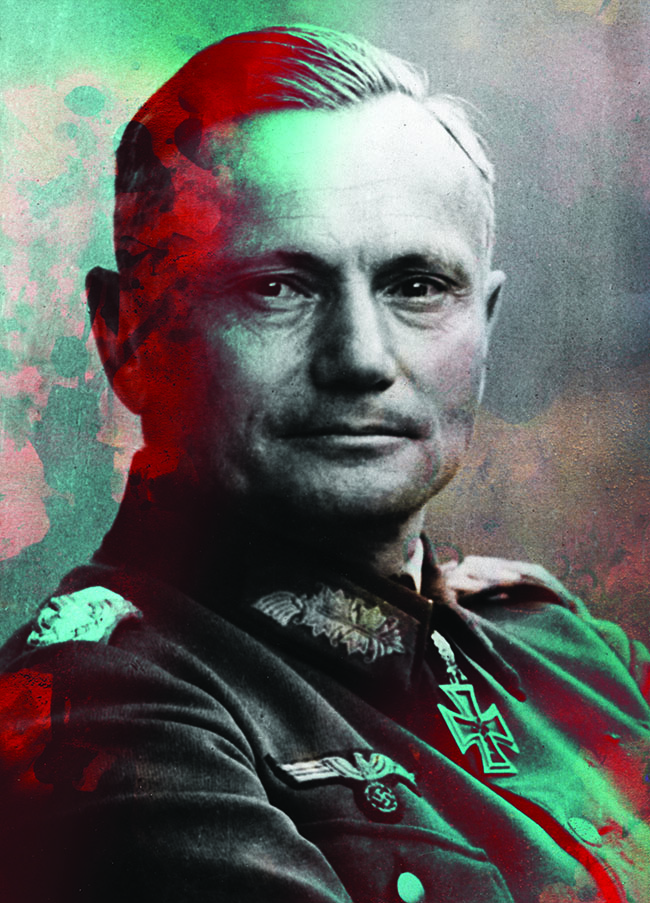
Rather, Balck had run politically afoul of Heinrich Himmler, Nazi Germany’s all-powerful Reichsführer-SS. The brain behind the Third Reich’s police state and the concentration and death camps of its “Final Solution to the Jewish Problem,” Himmler commanded the SS’s armed force, the Waffen-SS. And Balck had a long record of contentious relationships with Waffen-SS units and their politically motivated commanders.
Earlier that month, Hitler had appointed Himmler commander of the newly created Oberkommando Oberrhein—the Upper Rhine High Command. Although Himmler lacked military expertise—or any military competence at all—he was now in a position to deal Balck some payback. One of Himmler’s missions was to organize and command Operation Nordwind (“north wind”), a large-scale attack scheduled for January 1, 1945, as a follow-on counteroffensive to the already failing Ardennes Offensive. To start with, Himmler detached the German Nineteenth Army—the southernmost of Balck’s two field armies and the closest to the sector now under Himmler’s control—from Army Group G and placed it under Oberkommando Oberrhein, which initially had no troops of its own. Himmler did not want to share any anticipated glory with a Wehrmacht officer of Balck’s standing, so he next moved to get Balck out of the way.
Balck wasn’t in limbo for long, though. Nor was he free of conflicts with Waffen-SS leaders. His longtime friend and mentor, Colonel General Heinz Guderian, was then the chief of the general staff of the German army. With Germany in the final throes of the fight for its life, Guderian could not afford to have one of his most talented battlefield commanders sitting idle. Less than 12 hours after being relieved of command, Balck met with Guderian at the army’s high command headquarters at Zossen, just south of Berlin, to be briefed on his next assignment: assuming command of the Sixth Army and relieving one of its units, the IX SS Mountain Corps, then in Budapest and encircled by Soviet troops.
THE WAR ON THE EASTERN FRONT had been deteriorating steadily for Germany ever since summer 1944, when the Red Army’s Operation Bagration completely caved in Germany’s Army Group Center and the German frontline in the East. As the Germans fell back all along the line, Soviet forces entered Hungary from Romania that September.
Hungary had been a member of the Axis powers since late 1940, but was now looking for a way out of the war. On October 11, 1944, the Hungarian government of Regent Miklós Horthy signed a preliminary armistice agreement with the Soviets in Moscow. In response the German army, along with Hungarian troops of a just-formed breakaway government of loyalists to Germany, occupied the capital of Germany’s wayward ally.
Budapest, which stretches along both sides of the Danube River, originated from the 1873 merger of the cities of Buda, on the steeply hilly west bank, and Pest, on the flat east bank. Hitler ordered the Wehrmacht to hold Budapest and Hungary at all costs; Germany desperately needed Hungary’s agriculture and industry, and the Führer wanted to use Budapest as the base for a future counterattack against the Red Army.
The commander of German forces in Budapest was SS-Obergruppenführer Karl Pfeffer-Wildenbruch, 56, who previously had com-
manded the SS’s police division. His IX SS Mountain Corps was holding Budapest with the weak 8th and 22nd SS Cavalry divisions and elements of the 13th Panzer Division, the 60th Panzergrenadier Division, and the 271st Volksgrenadier Division. The Hungarian I Corps, under the command of a former instructor of German at Hungary’s Ludovika Military Academy, General Iván Hindy, 54, fought alongside them. Altogether, the Axis had some 79,000 troops defending the city.
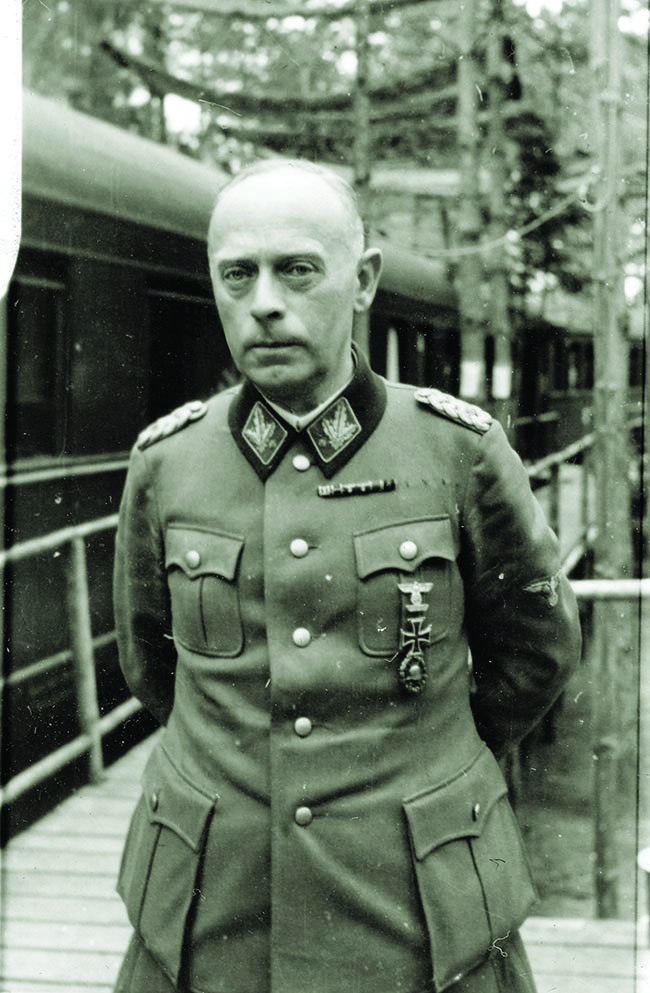
Joseph Stalin’s objective was to keep Hungary split from the Axis alliance so he could expand the Soviets’ sphere of influence by imposing a Communist–style sociopolitical system on the country. Hungary had tactical advantages as well; holding it would short-circuit British contingency plans to deploy forces to the Adriatic in late 1944, which would interfere with the Soviet premier’s vision for the postwar order in Eastern Europe.
On October 28, Stalin ordered the Red Army to capture Budapest without delay. The Soviet 2nd Ukrainian Front, along with the First and Fourth Romanian armies, converged on Budapest from the east, while the 3rd Ukrainian Front and First Bulgarian Army enveloped it from the south. The two Soviet fronts had 54 rifle divisions, five mechanized corps, and three tank corps. The total strength was more than 719,000 troops, with 170,000 committed to the initial assault against the city.
Red Army troops reached the outskirts of Pest on November 3. Momentum faltered after that, but by December 25, 1944, the Soviets had Budapest—and the Axis troops there—completely surrounded.
THAT WAS THE DAY Balck arrived in Hungary to assume his new command—just two days after having been relieved of his previous position. Virtually all of Budapest’s civilian population of more than one million was trapped in the city. During the first days of the siege, the city’s gas, water, and electricity supply systems failed. Left with only the barest means of sustenance, its residents were forced to shelter in cellars against the effects of air and artillery attacks. Medical services were almost nonexistent.
The IX SS Mountain Corps’ Pfeffer-Wildenbruch planned a breakout for December 28, before the Soviet encirclement had a chance to harden. Hitler, however, ordered the German garrison to stand fast.
To Balck, this sounded all too familiar. The army he now commanded, Sixth Army, had been completely reformed after having been annihilated at Stalingrad in early 1943. Surrounded and cut off by the Soviets in late 1942, Sixth Army might have had a chance to escape destruction by breaking out to the west, where it could have linked up with other German forces. However, Hitler refused to authorize the move, sealing Sixth Army’s fate.
Balck likened the situation he had just inherited to a “new Stalingrad.” He was in an ironic position. In December 1942, as the commander of the 11th Panzer Division, he had played a key role in the failed attempt to break through to Stalingrad and relieve Sixth Army. Now a little more than two years later, as commander of Sixth Army, he was once more leading a near-impossible relief operation.
Balck also assumed operational control of the Hungarian Third Army, making him the commander of a provisional army group. Including the 79,000 Axis forces encircled in the city, Balck’s initial force consisted of four German and four Hungarian infantry divisions and seven German panzer divisions. Deployed along a front ranging 50 miles southwest of Budapest to 50 miles northwest of it in present-day Slovakia, Balck had some 180,000 troops, about 102,000 of which were committed to the attempted breakthrough of the Soviet encirclement.
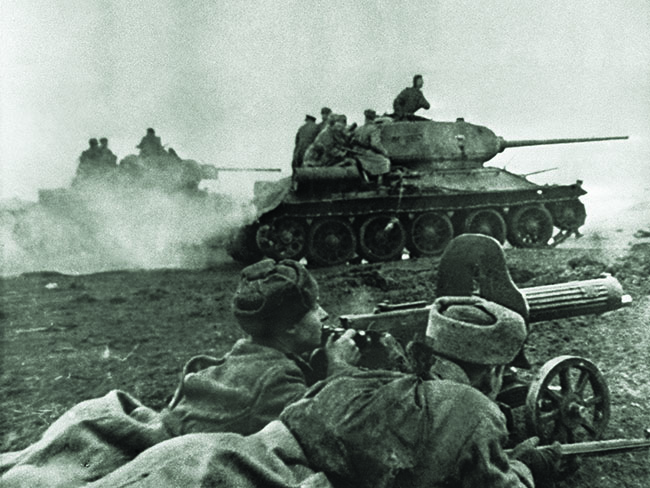
Balck had reviewed the situation map during his meeting with Guderian and noticed that the 3rd and 6th Panzer divisions were deployed illogically—with all their armored elements south of the Danube, facing Budapest, and their infantry and nonmotorized elements north of the river. “This must have been done by a real armor expert,” he sarcastically remarked at the time. Once in Hungary, he issued orders to regroup the two divisions. When the Sixth Army chief of staff told Balck the existing deployment was the result of a direct Führer order, Balck simply told his staff to do it without asking permission from anyone—least of all Hitler.
Balck knew he was facing a no-win situation. “Looking at the big picture, I understood completely at this point that after our Ardennes Offensive failed, the war was lost,” he later wrote. “Now came the most difficult of all leadership challenges in war—ending it without bigger catastrophes.”
Balck’s first objective was to stabilize his frontlines. Not only was Budapest completely surrounded, the Sixth Army’s LVII Panzer Corps, northwest of the city, was almost completely encircled by the 2nd Ukrainian Front. By December 31, Balck had managed to withdraw the corps back to the west with very few losses and into more defensible positions. With his front stabilized, he was ready to try to relieve Budapest itself.
BALCK LAUNCHED THE RELIEF EFFORT, Operation Konrad, on January 1, 1945. The 96th Infantry Division crossed the ice-choked Danube and advanced some 15 miles east along the north bank, almost as far as the city of Esztergom, northwest of Budapest. That secured the German left flank for the main attack toward Budapest along the Danube’s south bank. The following day, the IV SS Panzer Corps—consisting of the 3rd SS Panzer Division (“Totenkopf”), the 5th SS Panzer Division (“Wiking”), and the 1st and 3rd Panzer divisions—launched an attack from the area around Komárom, approximately 50 miles west of where the Danube makes its great 90-degree bend north of the Hungarian capital.
The corps’ commander, SS-Obergruppenführer Herbert Gille, 47, was—like Balck—one of only 27 recipients of Nazi Germany’s highest military award: the Knight’s Cross of the Iron Cross with Oak Leaves, Swords, and Diamonds. A devoted Nazi, Gille was undoubtedly a courageous and aggressive leader but, as Balck later wrote, “He was the type of Waffen-SS commander who as a matter of principle always resisted orders from any army officer.” He was also, in Balck’s opinion, a “strong, egocentric type who had no understanding of operational context and possibilities.”
The IV SS Panzer Corps caught the Soviets by surprise, and the advance went well at first. Northwest of Budapest, advancing against the Soviet Forty-sixth Shock Army (an army trained and organized as an assault unit), the panzer corps succeeded in relieving a number of German field hospitals and evacuating thousands of wounded. Following behind the panzer corps, the 711th Infantry Division secured Esztergom. On the IV SS Panzer Corps’ right, the III Panzer Corps conducted a supporting attack to pin down the Soviet Fourth Guards Army southwest of Budapest.
By January 5, however, the Soviets had managed to mass two shock corps in front of the German main effort, while another shock corps threatened Gille’s exposed right flank. The German attack stalled near Bicske, some 18 miles directly west of Budapest. The following day, the Second Ukrainian Front’s Sixth Guards Tank Army attacked north of the Danube and drove into the lines of the LVII Panzer Corps.
Guderian was visiting Balck’s headquarters at the time and ordered the 20th Panzer Division to deploy from Slovakia to reinforce Balck north of the Danube. Hitler tried to interfere by issuing direct orders on how the division should attack, but Guderian and Balck largely ignored him. By January 12, the situation north of the Danube was again stabilized.
WHILE FIGHTING CONTINUED there, on January 7, the Germans launched a second relief attempt, Operation Konrad II, to exploit the gains from the first effort. Group Breith, under the command of General of Panzer Troops Hermann Breith and consisting of the I Cavalry Corps and III Panzer Corps, attacked the Soviets 40 miles southwest of Budapest at the city of Székesfehérvár to relieve the pressure against IV SS Panzer Corps’ right flank. On January 9, I Cavalry Corps’ panzer units knocked out 74 Soviet tanks in a battle a few miles north of the city. That allowed Gille to shift his main effort to his left flank farther north, for a renewed attack through the positions of the 711th Infantry Division, southeast of Esztergom. Two days later, lead elements of his IV SS Panzer Corps reached Pilisszentkereszt, a village 10 miles southeast of Esztergom, en route to Budapest.
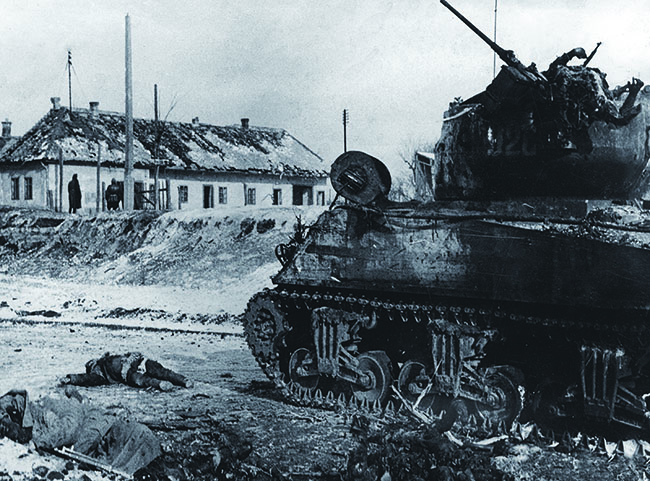
Hitler, however, had lost faith in Konrad II. With considerable justification, he feared that IV SS Panzer Corps was vulnerable to encirclement by the Soviet 5th Guards Cavalry Corps, assembled just northwest of Budapest. The Führer ordered the redeployment of Gille’s corps to the northern end of Lake Balaton—an enormous freshwater lake 60 miles southwest of Budapest—in preparation for what would become Operation Konrad III. The SS commander wanted to continue pressing the Konrad II attack. But as Balck later noted: “In this case, Hitler’s intervention was appropriate.”
After taking five days to redeploy over mountain roads and through snowdrifts, IV SS Panzer Corps reached its assembly areas near Lake Balaton. The ambitious Konrad III started on January 18: IV SS Panzer Corps made the main attack directly toward the east, supported on its left flank by the III Panzer Corps and on its right by the Hungarian Third Army. The Germans, rather than simply breaking through to Budapest, intended to surround and destroy 10 Soviet divisions in the vicinity of Székesfehérvár. They had a slight advantage, with 376 armored fighting vehicles to the Soviet Fourth Guards Army’s 250.
The Soviets were caught completely by surprise. Attacking on the left, the 1st Panzer Division thrust south around Székesfehérvár, then pivoted north toward Budapest. In the center, the 3rd and 5th SS Panzer divisions advanced 40 miles in 48 hours, reaching the Danube south of Budapest by nightfall on the 19th. The panzers then turned north along the river, reporting to Sixth Army headquarters the destruction of 60 Soviet tanks and self-propelled guns. There was, however, no evidence to support the claim and, immediately after the battle, Balck was unable to locate any trace of the destroyed tanks and guns. Much later, a Luftwaffe liaison officer to the IV SS Panzer Corps confirmed to Balck that the report had been a complete lie: an effort to inflate the Waffen-SS’s combat record.
The situation in Budapest, meanwhile, had continued to deteriorate. On January 17, Pfeffer-Wildenbruch started evacuating Pest, crossing to the hilly Buda side of the river. Soldiers and civilians were slaughtered and all manner of carts and vehicles were destroyed as they crossed the Danube bridges under continuous raking fire from the Soviets. By the next day, the Soviets had control of Pest; just before dawn, the Axis defenders blew up all of Budapest’s bridges, leaving many Germans and Hungarians still stranded on the Pest side.
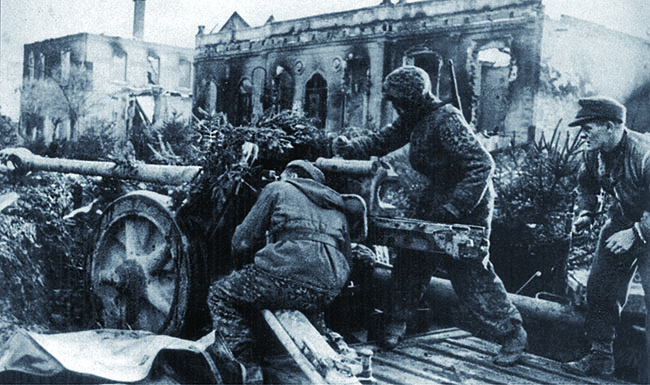
For the next three days, Balck’s forces advanced toward Budapest, taking Székesfehérvár and reaching Lake Velence—about halfway from Székesfehérvár to the Danube—on January 22. In just five days of operations, the Germans had taken more than 150 square miles of territory. But the Soviet 1st Guards Mechanized Corps threatened the left flank of the IV SS Panzer Corps’ northward thrust.
BALCK WAS FACED with a difficult decision. The IV SS Panzer Corps’ Gille wanted to keep driving straight toward Budapest—a plausible scenario, with little to his immediate front. But while penetrating to Budapest was one thing, holding open an evacuation corridor was another entirely. Without sufficient infantry forces, Balck knew that Gille’s corps would be marching into a trap unless the strong Soviet force on his left was eliminated first. Otherwise, the Germans would run a high risk of having not just one but two SS corps entrapped in the city. But, as Balck put it, “Gille was incapable of understanding this.”
Balck prohibited the narrow thrust, but the clash over tactics between Black and an outraged Gille cost the Germans a full day. By the time the attack resumed on a broader front on January 25, the Soviets had brought up their 5th Guards Cavalry Corps—with 100 tanks and 360 artillery pieces—against the IV SS Panzer Corps’ right flank.
Meanwhile, Soviet forces that had been pushed to the south during the initial German assault regrouped, attacking and virtually destroying the Hungarian Third Army and exposing Balck’s entire right flank.
On January 27, the 3rd Ukrainian Front joined the fray, with three mechanized and one rifle corps. Despite the Soviets’ overwhelming force superiority, their attack was poorly coordinated and they suffered huge losses at the hands of the Germans. In the end, though, the weight of numbers proved decisive, as the Soviet Fifty-seventh Shock Army also attacked the German right flank from south of Lake Balaton. By February 1, the Soviets had retaken almost all the ground the Germans gained during Konrad III.
That day, Hitler awarded Karl Pfeffer-Wildenbruch the Oak Leaves to the Knight’s Cross of the Iron Cross in the hope it would encourage him to hold out in Budapest, where savage fighting continued. The German and Hungarian defenders were by then compressed into little more than a square mile, centered on Buda’s Castle Hill. However, Pfeffer-Wildenbruch at last had had enough and on February 11 defied the Führer by attempting to break out with his 28,000 surviving troops, moving in three waves. The lead echelon achieved some
element of surprise and about 800 broke through and escaped. But the Red Army crushed the two follow-on echelons and captured Pfeffer-Wildenbruch and the Hungarian I Corps’ Iván Hindy. (The Hungarian Communist government executed Hindy for treason in 1946; Pfeffer-Wildenbruch remained a prisoner in the Soviet Union until 1955 and died in a traffic accident in 1971.)
THE SIEGE OF BUDAPEST lasted 108 days, with the city completely surrounded for 51 of them. The Soviets won the battle, but at a high cost, sustaining half of all casualties they suffered during the entire Hungarian Campaign. Casualty figures vary widely, but between November 3, 1944, and February 11, 1945, Soviet and Romanian casualties—including those fighting inside the city—most likely totaled about 280,000, with 70,000 killed. German and Hungarian casualties came to 137,000, with 47,000 of those killed. Approximately 105,000 Hungarian civilians also died in Budapest.
Balck was bitter about the loss. As he later commented, “Our operations were made much more difficult by the fact that each major Waffen-SS unit had a direct telephone line to Himmler, who routinely interfered in everything and who probably wanted to make Gille the savior of Budapest.”
One more desperate offensive was to come, though. Operation Spring Awakening was the last major attack the Wehrmacht conducted during World War II—and the most hopeless crapshoot of all Germany’s final offensives. Conducted from March 6–16, 1945, Spring Awakening’s objective was to secure oil fields southwest of Lake Balaton. Balck opposed it strenuously, arguing that it could not possibly succeed and would only further grind down the remaining German forces in the East. Herbert Gille and all six Waffen-SS divisional commanders supported it.
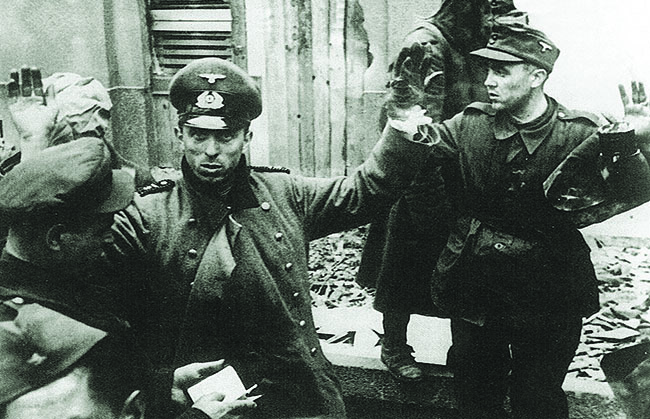
The main attacking force was the weak and gutted Sixth SS Panzer Army, led by SS-Oberstgruppenführer Josef “Sepp” Dietrich—an officer whose main claim to high command was that he had once been Hitler’s chauffeur and bodyguard. Balck’s Sixth Army received orders to support Dietrich on his right flank.
And, as Balck predicted, Spring Awakening failed miserably. “When six Waffen-SS divisions were committed as an integrated whole, it was a catastrophe waiting to happen,” Balck wrote, “especially when so many of the SS senior leaders had so little understanding of operational issues and the bigger picture.”
The last German forces were pushed out of Hungary on April 4, 1945, with Balck’s Sixth Army retreating west toward Vienna and beyond. His primary objective then became evading the Soviets and surrendering to the American forces approaching from the west.
On May 9, 1945, Balck surrendered the bulk of his Sixth Army in Kirchdorf, Austria, to the commander of the U.S. 80th Infantry Division. A POW until 1947, Balck in later years wrote a memoir of his war experience, which was published in Germany in the early 1980s and resounds with bile over the conduct of the final campaigns and the harmful influence of political leaders in military matters. The skilled field commander, who died in 1982 just shy of his 89th birthday, summed up his role in one sentence: “I just had to straighten out the consequences.” ✯





